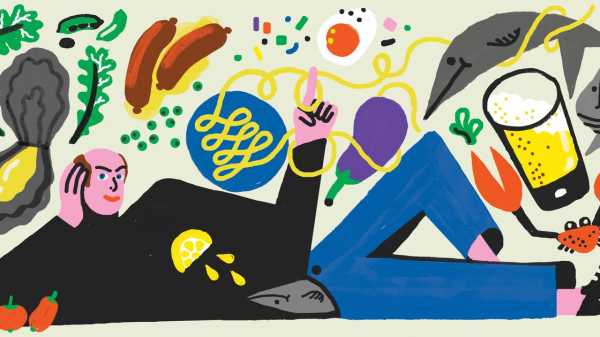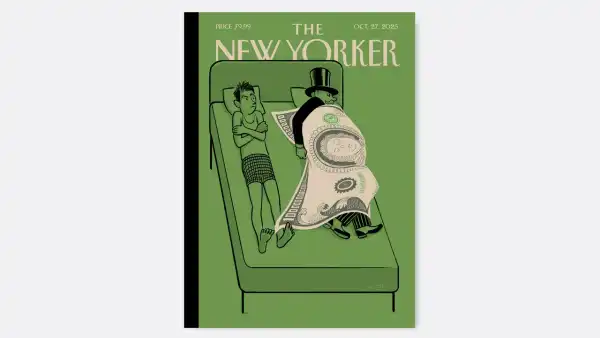
This isn’t about age. At least it’s not entirely about age. Admittedly, a number of years have passed since I began travelling the New York subway on a reduced-fare MetroCard for senior citizens—what I have always referred to as a Geezer Pass—but my affection for the nearby and the familiar began long before that. I can certainly date it to before the advent of VCRs—in the era when seeing a movie meant going to a movie theatre. I was living in Greenwich Village, and, if I read a review of a film that was playing a long way from the Waverly or the Greenwich or the Loews Sheridan, my response was a simple equation that could have been the work of a Michelin-guide writer: Is this film worth the journey? I thought of this custom as a sort of cost-benefit analysis, but I can understand that it might easily be confused with laziness.
Another way of looking at it requires a phrase that I learned from a friend I’d had since college days, Andrew Kopkind, a gifted journalist, who died in 1994. Andy was good at creating phrases—he would refer to, say, watching the Sunday-morning talk shows from Washington as “sniffing the Zeitgeist”—but he credited the phrase in question to his mother, the redoubtable Esther Kopkind, of New Haven, Connecticut. The phrase could describe something that was not worth the journey. It could also refer to taking on something that required an amount of time and effort that was simply too much bother. If someone who lives in a cramped Manhattan apartment and has a full-time job is told that what he needs is a dog, for instance, the Esther Kopkind answer would be “quel schlep!”
At some point, I noticed that my cost-benefit analysis had migrated from movies to restaurants—and there it has remained. When I consult the “Off the Menu” column in the Times, which lists new restaurant openings, I find myself reading each listing from the bottom up. If the address indicates more than a pleasant walk or a short bike ride from my house, I skip up to the next item. I realize that this narrowing of restaurant choices may invite comparisons to an endangered primate whose grazing habitat has been shrunk by development and pollution.
Some of this inclination for the nearby and familiar could, I suppose, be attributed to affection for my home territory, which has a ridiculous number of first-rate restaurants within an easy walk. I still live in the same house that I was living in when I began subjecting movies to a cost-benefit analysis, but, by some measures, I am no longer living in Greenwich Village. The house has not moved. But, at some point, the real-estate people decided that my neighborhood should be called the West Village, which is considered tonier. So the house got a free upgrade. I still think of my neighborhood as the Village, though, and I still have the wariness traditionally found among Villagers about crossing Fourteenth Street. The extreme position on that was voiced by Kenny Shopsin, the eccentric Village restaurant proprietor, who died this fall. About twenty years ago, when I was doing an article on the Village for a book celebrating the centenary of New York’s consolidation, I asked Kenny about the difference between the Village and uptown. “I don’t know,” he said. “I’ve never been uptown.”
There are, of course, countervailing instincts. Now and then, I’m excited to join an expedition to the outer boroughs to sample the food of one of those countries from which the current Administration is trying to discourage immigration. (For adventurous eaters, a minor irony of the current state of affairs is that a man who subsists on cheeseburgers and overdone steak is in charge of who can come to this country and open a restaurant.) But I don’t keep a list of places where I hope to have a meal some day—a sort of gastronomic bucket list. In fact, when I think of meals I wouldn’t mind travelling a long distance for, what comes to mind are a couple of dozen places I’d be returning to—a tiny restaurant in Nice called La Merenda, for instance, or the hawker centers of Singapore, or a backyard restaurant called La Teca, in Oaxaca, or some outdoor fried-fish stands in Barbados.
Last spring, I spent a few days in New Orleans, a city I’ve visited since high school and have written about regularly since 1960, when I covered the desegregation of the schools. I was in town for the Tennessee Williams/New Orleans Literary Festival, for which I participated in a panel discussion and had the honor of being one of the judges of the “Stella”-yelling contest. In that splendid closing event of the festival, the judges, standing on a balcony in Jackson Square alongside an actress costumed as Stanley Kowalski’s wife, rate the efforts of contestants who stand on the sidewalk below and yell “Stella!” (New Orleans having long been liberated in such matters, the competition isn’t limited by gender, and contestants can also yell “Stanley!” if they wish. He’s on the balcony, too.) In recent years, a number of notable new restaurants have opened in New Orleans, and by last spring I hadn’t tried all of them. I still haven’t tried all of them. With only three dinners to eat during my visit, I hit a nostalgia trifecta. I had dinner at Mosca’s, an Italian roadhouse that I’ve patronized for more than fifty years. Mosca’s was where some close friends and I celebrated my sixtieth birthday—the last big birthday before the Geezer Pass—and I’ve admitted to nominating the late matriarch, Lisa Mosca, for the Nobel Peace Prize. (Kissinger won that year.) I had dinner at Casamento’s, on Magazine Street, where patrons consume astounding oyster loaves in an all-tile space that gives some the impression that they are eating in a drained swimming pool. I had dinner at Upperline, in the Garden District, which has been quietly turning out classic New Orleans dishes since 1983. Three dinners, three old favorites. Did I have regrets? Yes, I regretted that Uglesich’s, the Croatian seafood joint, closed its doors thirteen years ago. I regretted that Buster Holmes quit dishing out red beans and rice at Orleans and Burgundy in the eighties. Yes, indeed, I had regrets.
Longing for what has wowed in the past can settle on individual dishes as well as on restaurants. Last summer, I was in Tuscany, near Siena, with my family, and I don’t think I failed at any meal to order ribollita or pappa al pomodoro—Tuscan bread soups that I don’t find often enough on the menus of Italian restaurants in my neighborhood. A bowl of either of those soups is pretty much a meal in itself, so I left it to others in our party to test my rule of thumb in ordering pasta: a pasta dish is likely to be satisfying in inverse proportion to the number of ingredients that the menu lists as being in it. Siena was actually where I got the first inkling of that rule of thumb, on a previous family trip, a dozen or so years ago. The toddler at the table, my oldest grandchild, was eating a simple dish of pici, the ropy Tuscan pasta, with butter sauce, and I noticed that she had taken to putting her arm around the plate to protect it from further “tasting” by the grownups, who had more complicated dishes in front of them.
Has fondness for the familiar ever morphed into a blind nostalgia that blots out evidence transmitted by the taste buds? We’d be talking about England. After Tuscany, I was in North London, visiting old friends whom I’d visited many times before, and my elder daughter and I decided to visit one of the nearby pubs. For years, she had listened to me speak of the pleasure I took from sitting in an English pub, nursing a pint of bitter while snacking on pub food so heavy that it consolidates in the stomach into something resembling a brass doorknob. When you feel the presence of that doorknob, I always said, you know you’re in England.
Approaching a pub that had always been one of my favorites, we saw a chalkboard menu outside the door. One item leapt out at us: avocado toast. I was deeply offended. “Avocado toast in a pub!” I said. “Is this not England? Is the Queen not still on the throne? Have we been magically transported to Marin County, California?” Or words to that effect.
We walked to another pub. The menu there was similarly trendy. It did, at least, offer bangers and mash, but where were the pasties? Where were the sausage rolls? We could, of course, find our way to some other neighborhood, one less familiar but perhaps more likely to have a proper pub. I thought about what would be involved in that—the research, the transportation, the delay in getting my pint of bitter. Then I thought, Quel schlep. I settled for the bangers and mash.
Sourse: newyorker.com






